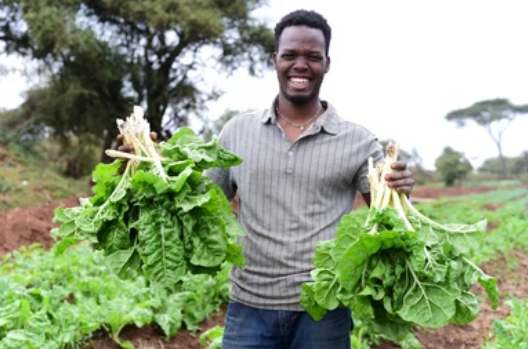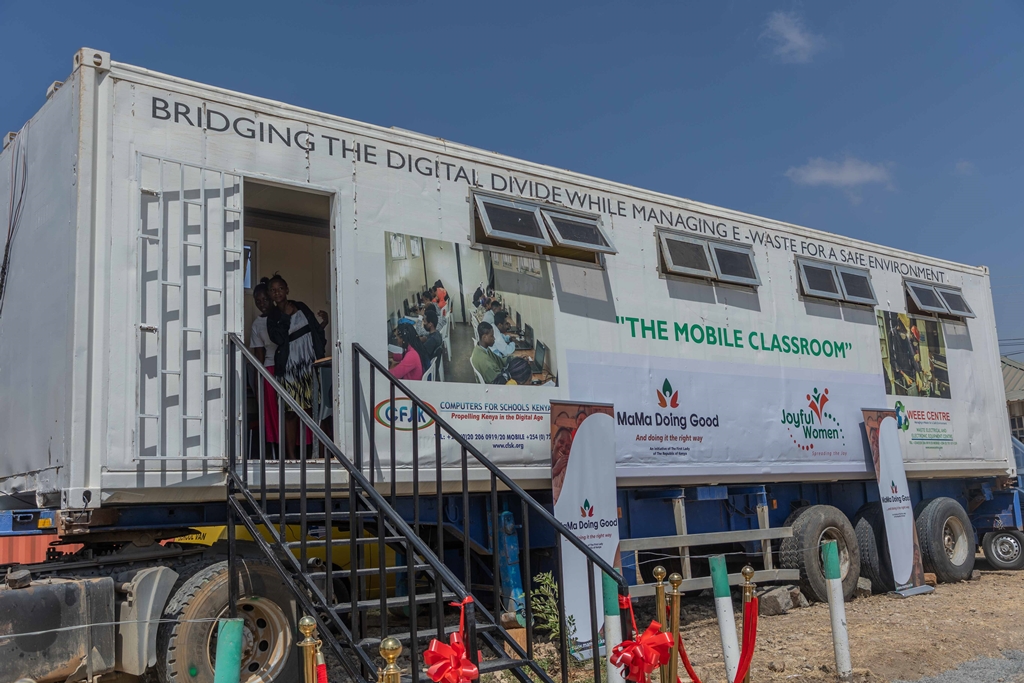Our Services
Agriculture: Agricultural Incubation
Objective: To encourage youth and women to take part in agriculture as a business
Situation: Whereas the Lake Region has serious agricultural potential, most of the farming activities are subsistence. The most vulnerable population in the region include the youth as well as women who constitute more than 50% of the total population. By encouraging this group to take up agribusiness, we shall be creating the opportunity for increased incomes and employment thereby reducing the poverty levels in the region.
Target Projects:
-
Train youth
and women on how to carry out Cage fish farming in Lake Victoria
-
Promote Sorghum
growing and aggregation
- Assist youth and women groups to establish vegetable production and irrigation projects along the shores of Lake Victoria
Project Status: Sourcing
for funding
How you can
participate: Please send us an e-mail if you are interested in partnering with
us as a benefactor or beneficiary


Health: Capacity Building for Community Health Workers
Objective: To develop a corps of health workers at the grassroots that will provide first line medical support
Situation: The doctor to patient ratio in the Lake Region is far below the recommended levels. Health facilities are also few and at considerable distance to those who need their services. As a result, many illnesses are not attended to by health professionals. This has led to the spread and resistance of treatable diseases and has further slowed down efforts to reduce mother to child transmission of HIV. By empowering community health workers with modern skills, we shall be developing a cadre that will provide first level support and will refer patients to skilled attendants where the need arises.
Target areas:
-
Develop a
training manual for CHWs in the four counties (Homa Bay, Migori, Siaya and
Kisumu)
-
Identify,
train and equip CHWs to provide first level medical support
-
Lobby
legislators and policy makers to include CHWs in the county and national health
policy and structure
- Propose a policy for the management and motivation of CHWs in the target region
Status: Sourcing for
funding
How you can
participate: Please send us an e-mail if you are interested in partnering with
us as a benefactor or beneficiary


Education: Computer for Schools
Objective: To introduce students to computing and information technology at an early age so that they can be players and solution providers in the global information society.
Situation: Whereas the government has made strides in connecting schools within the region to the national electricity grid, the uptake of computing and ICT is still very low. Schools have limited budgets for ICT hardware and software acquisition. More acute is the shortage of teachers who are capable of teaching ICT, as well as laboratory facilities that can be used for computing. LREN shall source donations of computing equipment, package them into a mobile containerized computer laboratory which shall then serve schools within a defined radius.
Target areas:
-
Develop a
computing training programme for secondary school students
-
Source for
computing hardware and software from donors
- Develop and implement the first LREN mobile computer laboratory
Status: Sourcing for
funding
How you can
participate: Please send us an e-mail if you are interested in partnering with
us as a benefactor or beneficiary

Agriculture Situation in the Lake Region
Agriculture is a key sector of the Kenyan
economy and employs the largest number of Kenyans in a single sector.
Statistics indicate that the agricultural sector directly accounts for about 26
per cent of Kenya’s GDP, accounts
for 65 per cent of Kenya’s total exports, 18 per cent of formal employment and 60 per cent of informal employment.
The Lake region has favorable environmental features of arable land, good
soil, and consistent water supply from rain as well as several rivers and
lakes. These features have formed the foundation on which residents have relied
on for generations. In the past these features were adequate to ensure the food
security of the region. However, over the past 50 years, Kenya’s population,
and that of the Lake Basin region in particular, has grown to a point where
existing farming practices and food supply chains do not meet current food
security needs.
Key cash crops in the region are sugarcane, tea, pyrethrum and cotton; key food crops are maize, rice, and
beans, and horticultural crops such as passion fruits, mangoes, and tomatoes.
The main farming practices in the region
include small-scale rain-fed farming, small-scale river irrigation, wetland
farming, fish farming and free-range livestock
production.
Lake Victoria accounts for about 96 per cent
of Kenya’s total fish production. However, pollution and overfishing is
threatening fish stocks and its economic contribution to the Lake Region.
Other challenges to
prosperity through agriculture include declining farm yields as a result of
decreasing farm sizes, poor farming methods and lack of title deeds. Additional
challenges include lack of education and extension services as well as failure
to manage the effects of climate change.
Within fisheries,
traditional hunting and gathering methods dominate, which fail to meet modern
demands on quality and sustainability. Aquaculture is still at a very low stage
of adoption and fish value addition is largely absent.
LREN works with
stakeholders to train farmers in modern agricultural practices. Through these
partnerships, we provide input such as seed, fertiliser and farm equipment.
Among the fisher folk, we promote aquaculture particularly cage fish farming as
a sustainable alternative to the traditional methods. We are developing an
agribusiness incubation programme that targets youth and women within the
region.
Health Situation in the Lake Region
The health sector plays a pivotal role in
economic growth and poverty reduction. The third
goal in Sustainable Development Goals (SDG) seeks to ensure healthy lives and
to promote wellbeing for all at all ages. LREN works with stakeholders in the
region to achieve the targets set under SDG3.
Health indicators in the Lake Region are a
cause for concern and pose serious challenges to the region’s development.
Health challenges include high rates of infant
and child mortality – ranging to highs of 12 to 15per cent in some Counties;
HIV/AIDS prevalence (Homa-Bay,
Kisumu and Migori counties have the highest HIV prevalence rates nationally); high rate of HIV infections which
contribute 54 percent of new
HIV infections in the country and high under five mortality rates.
With regards to malaria, the Lake Region is
classified as an endemic zone with a malaria prevalence rate of 38 percent.
In terms of HIV, 75 percent of new HIV
infections among children occurred in 5 of the 10 counties in the Lake Region. Counties with the highest adult HIV
prevalence in 2013 included Homa Bay 25.7 percent; Siaya 23. 7percent; Kisumu
19.3 percent; Migori 14.7 percent and Kisii 8 percent.
Additionally, diseases such as upper
respiratory tract infections and diarrhea account for 26 percent of the
morbidity in the region; pneumonia and skin diseases account for about 20
percent of morbidity.
Health personnel challenges are also dire in
the Region: Homa-Bay County has a doctor- population ratio of 1: 40,000 and
nurse-population ratio of 1:1,500; in Kisumu the doctor- population ratio is
1:44,634 and the nurse population
ratio is 1:2,383.
Further, health facilities are inadequate and those that are available have poor infrastructure that is in urgent need of maintenance and upgrades. The limited capacity of these health facilities poses a greater challenge than the distribution of facilities.
It is evident that the Lake Region is miles away from realization of SDG 3. Working with all stakeholders, we strive to achieve the following goals under SDG3:
SDG 3 “Ensure healthy lives and promote wellbeing for all at all ages” The goals within a goal: Health targets for SDG 3
3.1 By 2030, reduce the global maternal mortality ratio to
less than 70 per 100 000 live births.
3.2 By 2030, end preventable deaths of newborns and children
under 5 years of age, with all countries aiming to reduce neonatal mortality to
at least as low as 12 per 1000 live births and under-5 mortality to at least as
low as 25 per 1000 live births.
3.3 By 2030, end the epidemics of AIDS, tuberculosis, malaria
and neglected tropical diseases and combat hepatitis, water-borne diseases and
other communicable diseases.
3.4 By 2030, reduce premature mortality from non-communicable diseases by one third through prevention and treatment and promote mental
health and well-being.
3.5 Strengthen the prevention and treatment of substance
abuse, including narcotic drug abuse and harmful use of alcohol.
3.6 By 2020, halve the number of global deaths and injuries
from road traffic accidents.
3.7 By 2030, ensure universal access to sexual and
reproductive health-care services, including for family planning, information
and education, and the integration of reproductive health into national
strategies and programmes.
3.8 Achieve universal health coverage, including financial
risk protection, access to quality essential health-care services and access to
safe, effective, quality and affordable essential medicines and vaccines for
all.
3.9 By 2030, substantially reduce the number of deaths and
illnesses from hazardous chemicals and air, water and soil pollution and
contamination.
3.a Strengthen the implementation of the WHO Framework
Convention on Tobacco Control in all countries, as appropriate.
3.b Support the research and development of vaccines and medicines for the communicable and non-communicable diseases
es that primarily
affect developing countries, provide access to affordable essential medicines
and vaccines, in accordance with the Doha Declaration on the TRIPS Agreement
and Public Health, which affirms the right of developing countries to use to
the full the provisions in the Agreement on Trade-Related Aspects of
Intellectual Property Rights regarding flexibilities to protect public health,
and, in particular, provide access to medicines for all.
3.c Substantially increase health financing and the
recruitment, development, training and retention of the health workforce in
developing countries, especially in least developed countries and small island
developing States.
